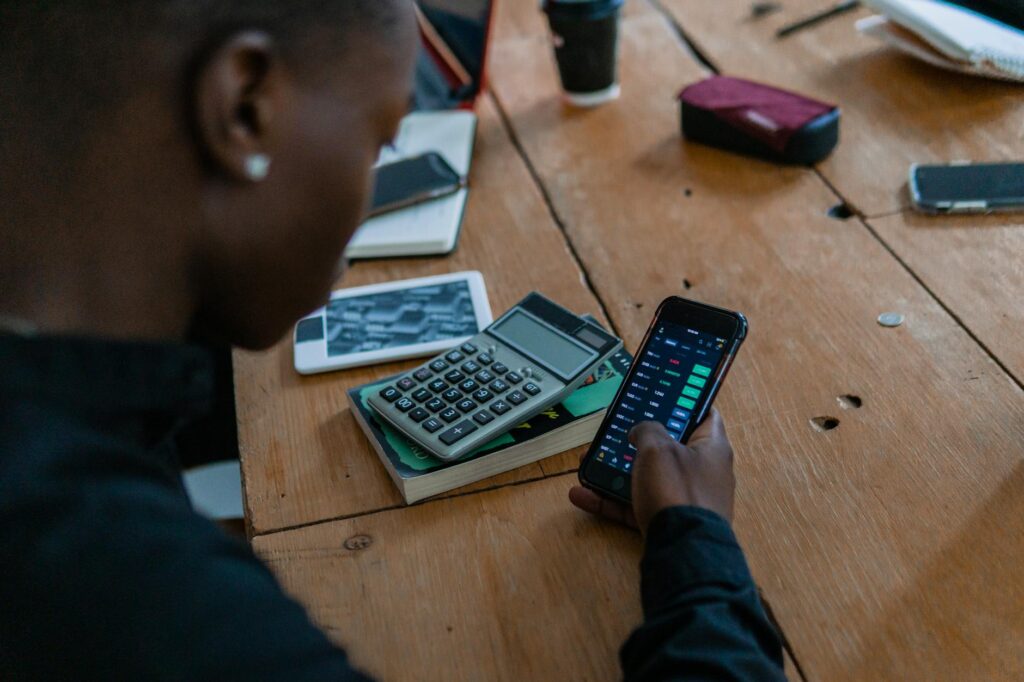The Long-Term Vision for a Truly Global and Permissionless Financial System
Ever tried to send money overseas? It’s a mess. You’ve got weird acronyms like SWIFT and IBAN, waiting periods that feel like an eternity, and fees that nibble away at your total. It’s slow, expensive, and controlled by a handful of giant institutions who get to decide if your transaction is ‘valid’. It feels… old. Now, imagine a different world. A world where value moves as freely and instantly as an email, from a farmer in Kenya to a developer in South Korea, with no one in the middle to say no. That’s the core promise of a truly global and permissionless financial system. It’s not just a nerdy fantasy anymore; it’s a future that engineers and visionaries are building, block by block.
Key Takeaways
- A permissionless financial system allows anyone to participate and build without needing approval from a central authority like a bank.
- It’s built on core pillars like decentralization (blockchain), self-custody (you control your own funds), and open-source code.
- The long-term vision is a world of instant, low-cost global transactions, accessible financial products for everyone, and true ownership of digital assets.
- Major hurdles remain, including scalability, user experience, regulatory uncertainty, and security risks.
- The path forward involves building bridges between blockchains, improving usability, and focusing on education to drive mainstream adoption.
So, What Does ‘Permissionless’ Actually Mean?
It sounds a bit jargony, I know. But the concept is simple. Think about the internet. You don’t need to ask for permission from Google or Verizon to build a website. You just… do it. You buy a domain, you write some code (or use a tool), and you publish it for the world to see. It’s an open platform. That’s permissionless.
Our current financial system is the exact opposite. It’s permissioned. To open a bank account, you need permission. To get a loan, you need permission. To build a new financial app that connects to the banking system, you need a mountain of permissions, licenses, and partnerships. Every step of the way, there’s a gatekeeper.
A permissionless system throws that model out the window. It replaces the gatekeepers—the banks, the governments, the payment processors—with open protocols. Code becomes the law. If you can connect to the network (like connecting to the internet), you can use it. No one can freeze your account, block your transaction, or deny you access because they don’t like where you live or who you are. It’s a radical shift in power from institutions to individuals.
The Core Pillars of a Global, Permissionless Financial System
This future isn’t built on wishful thinking. It stands on a few powerful technological pillars that work together to make it all possible.
Decentralization: No Single Point of Failure
The foundation of it all. Instead of a bank’s central server holding all the data (a single point of attack or control), information is stored across thousands of computers worldwide on a blockchain. This distribution of power means no single entity can alter the ledger or shut down the network. It’s what makes the system resilient and censorship-resistant. A government can pressure a bank; it can’t pressure a thousand anonymous node operators scattered across the globe.

Self-Custody: Your Keys, Your Coins
When you put money in a bank, it’s not really ‘yours’ in the purest sense. It’s an IOU from the bank. They can freeze it, seize it, or go under. In a permissionless system built on cryptocurrency, you hold the private keys to your digital assets. This is called self-custody. It’s a bit like holding physical cash. You have absolute control. This is a massive responsibility, of course—lose your keys, and you lose your funds—but it represents true financial sovereignty.
Open-Source and Composable: The ‘Money Legos’ Effect
This is where things get really exciting. Most protocols in Decentralized Finance (DeFi) are open-source. Anyone can see the code, verify it, and—most importantly—build on top of it. This creates a phenomenon known as ‘composability’ or ‘money legos’. A team can create a protocol for lending. Another team can then take that ‘lego’ and plug it into their new protocol for yield farming, without needing to ask for permission. This accelerates innovation at a blistering pace that traditional finance, with its closed-off systems, could never match.
Censorship Resistance and Neutrality
Because the network is decentralized and runs on code, it’s neutral. The protocol doesn’t care about your nationality, your politics, or your credit score. It only cares if your transaction follows the rules of the code. This neutrality is crucial for creating a truly global system that can serve the 1.4 billion people worldwide who are currently unbanked or underbanked, often excluded by the traditional system.
The Long-Term Vision: A Day in the Life
Okay, enough theory. What does this actually look like for a normal person? Let’s paint a picture set 15 or 20 years from now.
Meet Anya, a graphic designer living in Manila. She finishes a project for a client based in Berlin. The moment the client approves the work, a smart contract automatically releases payment. Not in 3-5 business days. Not after a 3% wire transfer fee. Instantly. The digital euros are in her wallet in seconds, and she pays a transaction fee of about ten cents.
Later that day, she decides to invest a portion of her earnings. She doesn’t call a broker. She opens her wallet, connects to a decentralized investment protocol, and puts her funds into a liquidity pool that finances small business loans in emerging markets. She can see the protocol’s code, its performance history, and the exact yield she’s earning in real-time. She’s become a global lender with a few taps on her screen.
Her cousin in a rural village needs to buy a new solar-powered water pump for his farm. He scans a QR code on the pump, and his wallet proposes a micro-loan from a global, decentralized credit protocol. The loan is approved in minutes based on his digital reputation, not a traditional credit score. The funds are disbursed, and the pump is his.
This is a world where financial friction is nearly eliminated. Capital flows to where it’s most needed, unburdened by borders and intermediaries. It’s a world where everyone, regardless of their location, can access sophisticated financial tools.
Okay, But What Are the Hurdles? (Because There Are Many)
Let’s be real. This isn’t all sunshine and rainbows. Building this new system is incredibly hard, and anyone who tells you otherwise is probably trying to sell you something. We’re facing monumental challenges that we absolutely must solve to get to that future.
The Scalability Trilemma
This is a classic engineering problem in the blockchain space. You have three desirable properties: Decentralization, Security, and Scalability (the ability to handle lots of transactions). The trilemma states that it’s extremely difficult to have all three; you typically have to make trade-offs. Early blockchains like Bitcoin and Ethereum prioritized decentralization and security, which is why they can feel slow and expensive. Solving this is the holy grail. Technologies like Layer 2 rollups are promising, but we’re not there yet.
The User Experience (UX) Nightmare
Right now, using crypto and DeFi is… clunky. You have to manage complex wallet addresses, safely store seed phrases, understand ‘gas fees’, and navigate interfaces that look like they were designed for programmers. It’s intimidating. For mass adoption, it needs to be as easy as using Venmo or PayPal. We are seeing progress with smart contract wallets and account abstraction, but the learning curve is still a brick wall for most people.
The Regulatory Maze
Governments and regulators around the world are understandably nervous. They see a system that can facilitate tax evasion and money laundering, and they aren’t wrong. The clash between the permissionless, pseudonymous nature of crypto and the regulatory requirements of Know Your Customer (KYC) and Anti-Money Laundering (AML) laws is a massive, unresolved conflict. Striking a balance between freedom and security is perhaps the single biggest non-technical challenge.
Security and the Specter of Hacks
The saying ‘code is law’ has a dark side. If there’s a bug or an exploit in a smart contract’s code, hackers can drain it of millions of dollars with no recourse. We’ve seen countless high-profile hacks and exploits. While security practices are improving, the complexity of these systems means that risk will likely always be a factor. Audits help, but they aren’t foolproof. Building user trust in a system where you can lose your life savings in an instant is a steep hill to climb.
Building Bridges, Not Walls: The Path Forward
So how do we get from here to there? It won’t be a single ‘eureka’ moment. It’ll be a slow, steady process of building, iterating, and solving problems one by one.
First, we need interoperability. The future isn’t one blockchain to rule them all. It’s a multi-chain world where value can move seamlessly between different networks. Projects working on cross-chain bridges and communication protocols are laying this critical groundwork.
Second, we need to relentlessly focus on abstraction and user experience. The average user shouldn’t have to know what a ‘rollup’ is or which network they’re on. The complexity of the underlying technology needs to be hidden behind simple, intuitive interfaces.

Third, education is paramount. Users, developers, and especially regulators need to understand both the potential and the risks of this technology. Fear often comes from a lack of understanding. Constructive dialogue is the only way to create sensible regulations that protect consumers without stifling innovation.
The goal isn’t to replace the entire legacy financial system overnight. The more likely path is a hybrid one, where decentralized rails run in parallel with traditional ones, offering a better option for specific use cases—like cross-border payments or artist royalties—and slowly gaining trust and adoption over time.
Conclusion
The vision of a global, permissionless financial system is one of the most ambitious and potentially transformative ideas of our time. It’s a move towards a world that is more open, equitable, and efficient. It gives individuals more control over their financial lives and creates opportunities that were previously unimaginable.
But the road ahead is long and filled with immense technical, social, and political challenges. It requires patience, persistence, and a healthy dose of realism. This isn’t about getting rich quick on the latest meme coin. It’s about fundamentally re-architecting the infrastructure of money for the internet age. It’s a marathon, not a sprint, but it’s a race that is absolutely worth running for the future it could unlock for everyone.


